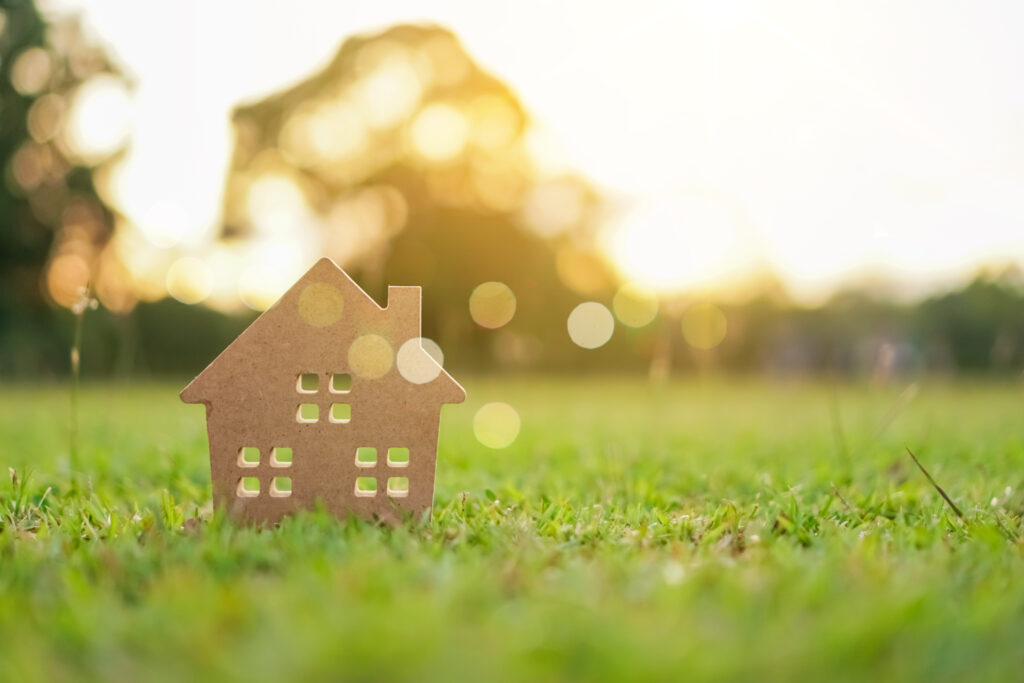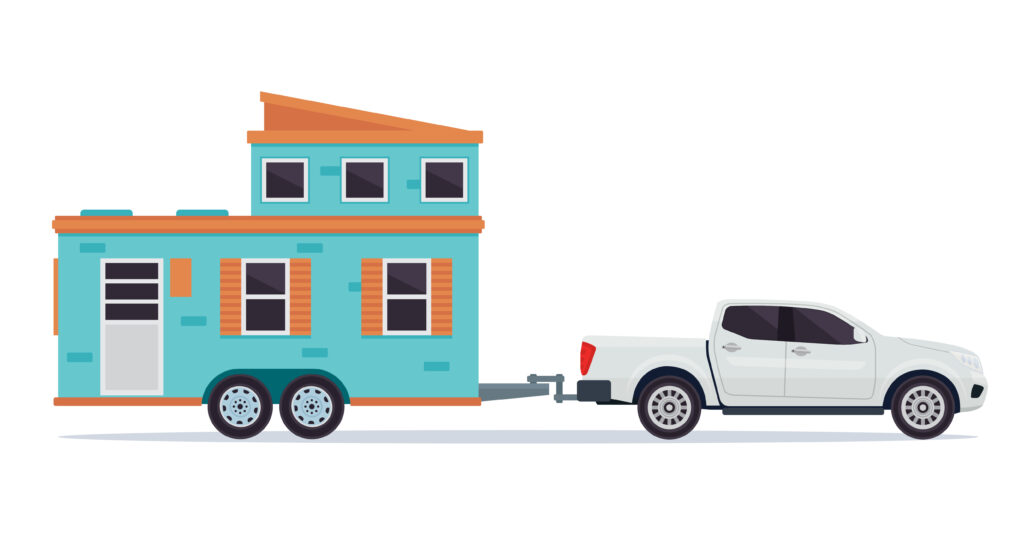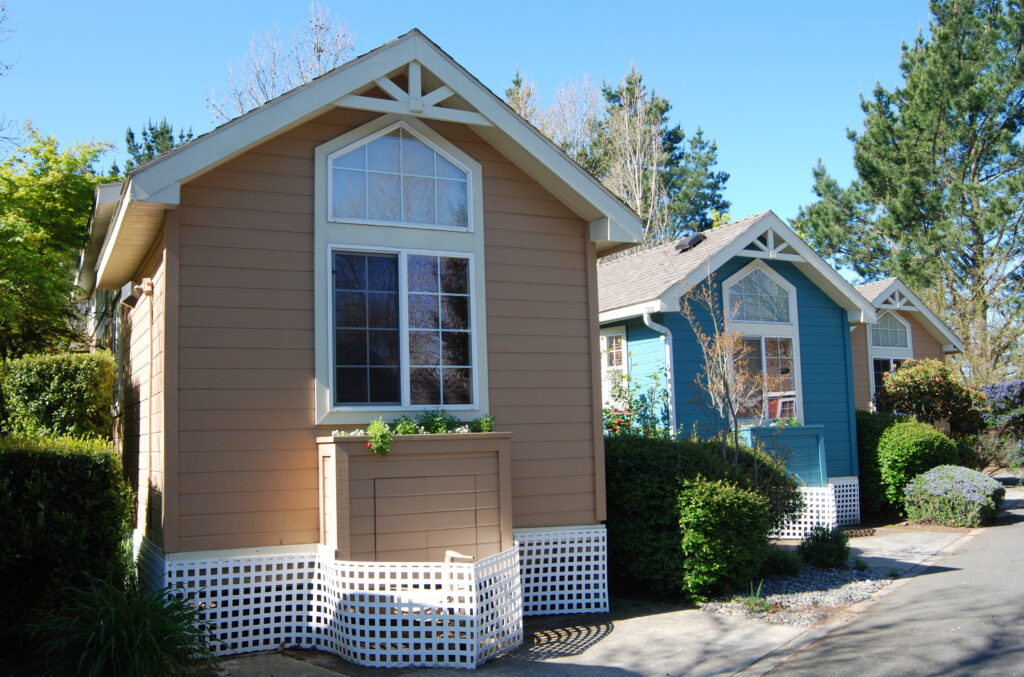24 Dec Manufactured Housing Taking Over as Affordable Small Homes
The need for affordable housing has been a long-time concern for lower middle class families in the US. more than a decade ago, mostly through vans, buses, and DIY conversions, the tiny house trend began gaining ground as a possible solution to affordable housing. Back then, much like the first RVs, most houses were homemade. This meant that while quality may have suffered, prices were next to nothing. Once contractors and builders began to market the mass reproduction of these small structures for alternative housing, word spread and things began to gofrom freedom-seeking to red tape.
So why is there a growing trend in tiny house builders beginning to expand their services to selling park models and manufactured homes?
As the cost of production raises, the cost of an average 120 square foot tiny home increases and consumers are beginning to push back. In the time of pandemic, business slowed for many manufacturers. In researching market trends since the tiny house boom and talking to experts in the movement,it seems these three reasons for the builder switch stand out.
The Increase in Cost for Tiny House Manufacturing

Even just five years ago, the average tiny home as selling for $25,000-$40,000 whereas now most are on the market in the $60,000-$120,000 range. This is accounting for THOWs (Tiny Houses on Wheels) which means you are buying this house only–no land or property to accompany it.
“When building a modular home there is no trailer cost. The movable foundation can get quite expensive–most starting around $6,000. If you are not going to be moving the home, the additional expense of the state approved third party agency may make sense,” said Robin Butler, President of NOAH Certified.
Andrew Odom, former tiny house dweller and tiny house event planner for the Pink Hill Tiny House Festival and Outer Banks Tiny House Festival added, “There are a number of factors contributing to the decline in tiny house builders. They are as varied as no prior business experience to not understanding what ‘contractor grade’ is. Building a $50,000 house is no easy feat when you are depending on your own resources to fund such an endeavor. That doesn’t mean though that I think some builders are expanding into park models and more manufactured units in order to stay afloat. In fact, I think they are being rather shrewd by analyzing the legal issues that still plague the modern tiny house movement as well as what the public is calling for. Park models – while not being large nor tiny – are a great, legal compromiseto an otherwise discouraging situation.”
The other major cost player is hauling the home. Chris Schapdick, Owner of Tiny Industrial sai, “Tiny houses are painfully heavy and moving one around is a big deal. Many people see the house on wheels and assume that moving it around is a breeze. It can be a real shocker to find out what it takes/costs to move or relocate a house. You’ll need a truck that’s the same price as what you just paid for the house.”
When you take the skyrocketing costs of a build and add that to the difficulty tying down financing or insurance, people walk.
Parking, Taxes, and Anti-Government Ideals

Because most tiny houses being sold by the builders seeking to add park models and manufactured homes to their list of offerings have been on wheels up to this point, their decision to expand makes the red tape and logistics much easier to navigate. While they may have an investment up front to get these types of houses certified, once that is established, there isn’t as much logistical headache when a homeowner has land and is building on a foundation. This opens up the buyer’s market.
In addition to the trouble with building homes on wheels, the size of the tiny house makes a huge difference. Many municipalities have legalized ADUs (Accessory Dwelling Units) but they have to meet certain size requirements. Many THOWs are too small because they have been built to meet road standards (maximum of 8 feet wide and 13.5 feet high).
Code consistency is the nail in the coffin for many THOW buyers because there isn’t anything that is clearly black and white. In some states, you are looking to your county, while others look to state or even federal regulations for the home size, land requirements, parking options, and more. These endless regulations are causing tiny house dwellers to become more and more isolated to ensure they aren’t kicked off of their property or parking space. The isolation can become aunting for many.
This maze of red tape is what keeps many tiny house curious people from pulling the trigger on buying. Because of the masses saying ‘no’ to buying tiny, many contractors are finding themselves shelling out money to take THOWs to tiny house events, throwing cash at marketing, but the business just doesn’t remain steady. So they are seeking a change.
The Tiny House Trend is A Narrow, Niche Market
 Tiny houses took off because people were seeking a change–to escape the rat race of the 9-5 work day where they felt like they were spinning their wheels and unhappy with the results. This idea of freedom is still very tempting to millions, but so few are willing to even consider that drastic of
Tiny houses took off because people were seeking a change–to escape the rat race of the 9-5 work day where they felt like they were spinning their wheels and unhappy with the results. This idea of freedom is still very tempting to millions, but so few are willing to even consider that drastic ofan option that tiny houses, in general, are a niche market and buyers are few.
“The client looking for more room would lean toward a PMRV because of the limitations of the 8’6” width requirement for a TH RV. PMRV can be less than 400 square feet of conditioned space. This does not include the loft or open porches, so you can get more room theoretically in a PMRV,” added Robin Butler, President of NOAH Certified.
Chris Strathy, the mustaches face behind the very successful business, The Capable Carpenter, said, “I live to help people go tiny. Building a tiny house is easy. Building a tiny home designed for the individual and families needs, beautifully and affordable, is not so easy. Any niche business is a difficult one and I still take on all types of work to keep positive cash flow. In my opinion, if builders focused more on the individual instead of the numbers, less construction companies would be struggling.”
Though there are many more people speaking out now, most still believe that they cannot successfully raise a growing family in a tiny house. They argue the lack of space, less storage, and inability to feel secure parking makes it feel impossible to raise a family. Parents are worried about school systems finding out their kids live in a home on wheels.
These fears make it difficult for current tiny home builders to maintain clients who want to build on to their tiny house, build a larger THOW, or even do a redesign to their interior when they want to grow their families as most who bought tiny when they were single are simply ditching the THOW and buying traditional spaces.
For these and many smaller reasons, manufactured homes over tiny houses are making a comeback. Bloomberg reports since 2009, that manufactured housing has been on the rise. Many home buyers are turning to manufactured homes, because they are more affordable. According to the National Association of Realtors, an average American home cost about $188,000, whereas manufactured and park model homes begin in the $40,000 range.
When you pair the price with the ease of certifying, insuring, and parking your park model home or manufactured house on a foundation, the move makes sense for many tiny house builders struggling to maintain business within the movement for small houses on wheels.

Sorry, the comment form is closed at this time.